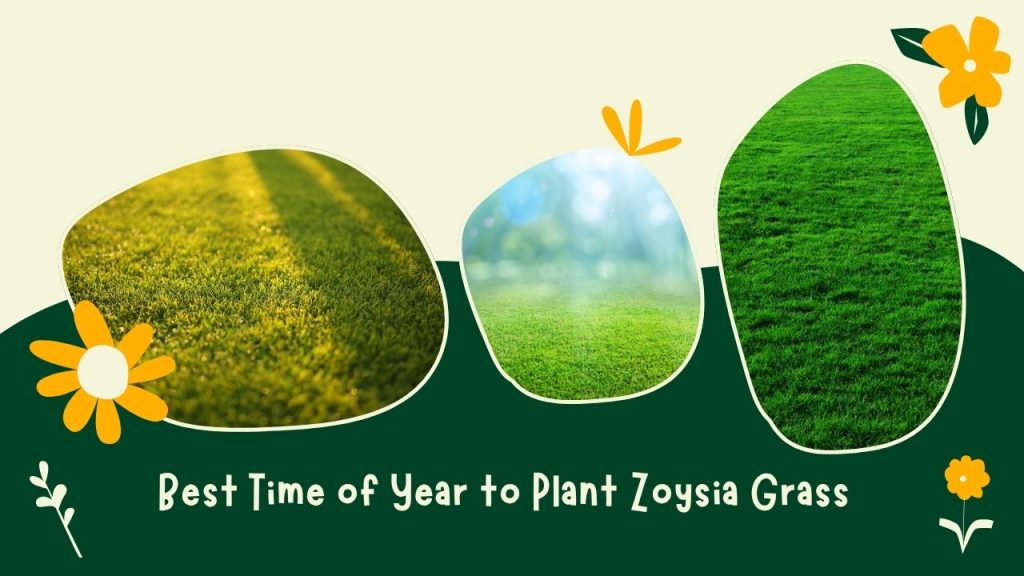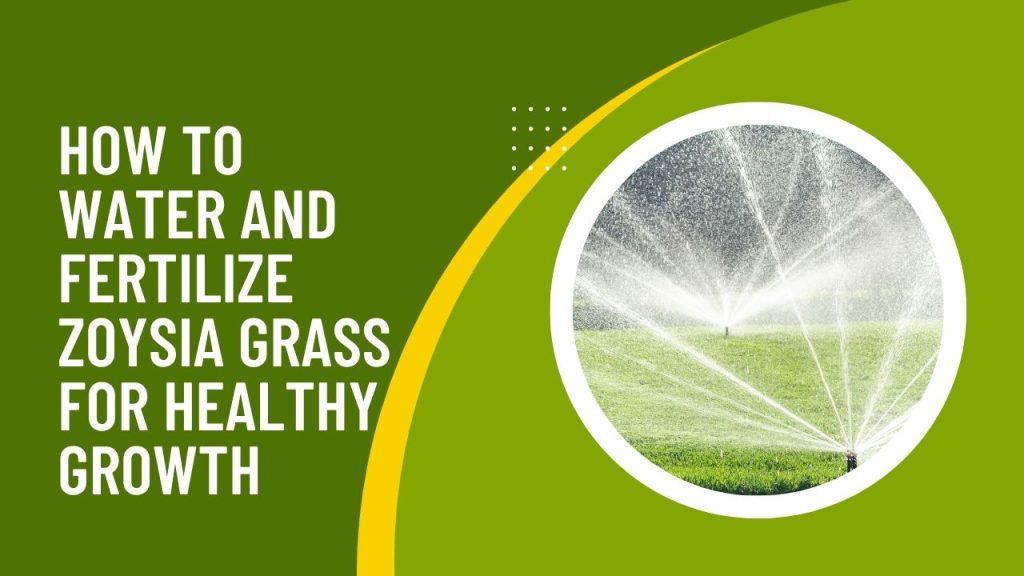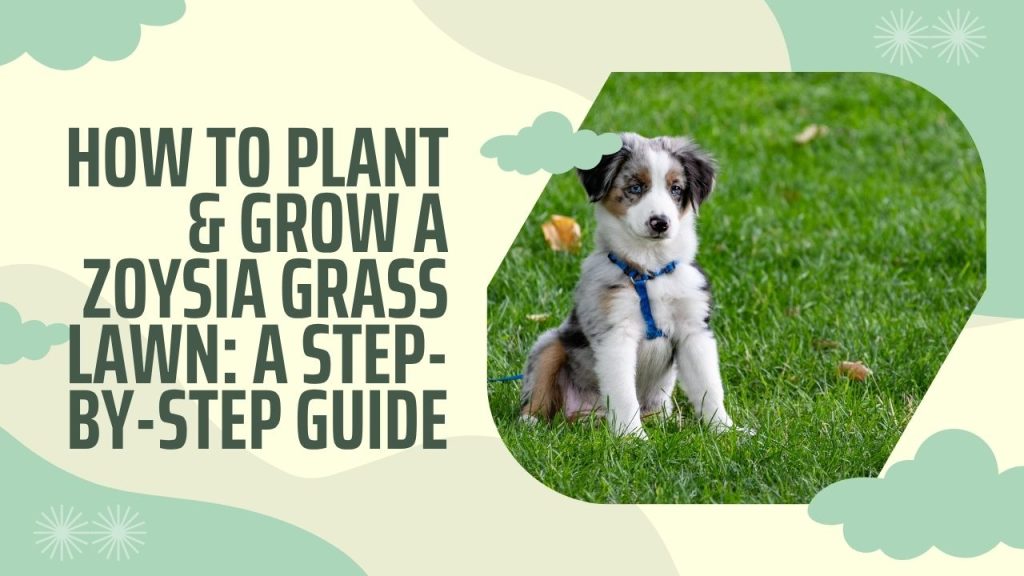Zoysia grass is a popular choice for homeowners looking for a low-maintenance, hardy lawn. It grows well in warm climates and handles foot traffic like a champ. If you want thick, carpet-like turf that stays green through much of the year, Zoysia could be your answer.
It doesn’t need as much water as some other grasses. It also holds up well during droughts and grows slowly, meaning fewer mowing sessions. Plus, once it takes root, weeds have a tough time breaking through.
Zoysia is especially useful in transition zones, where summers are hot, and winters are cool. It stands up to heat, humidity, and some cold. And although it may go dormant and brown during colder months, it springs back to life once temperatures warm up. So, if you want a tough, good-looking lawn without babysitting it every weekend, Zoysia is worth a serious look.
Find Out More : When to Fertilize Lawn: A Simple Guide for Healthy Grass

Best Time of Year to Plant Zoysia Grass
Timing matters. Zoysia grass does best when planted in late spring or early summer. That gives it plenty of warm days to establish roots before cooler months set in.
You want soil temperatures to be consistently above 60°F. If you plant too early in spring, cold snaps can slow germination. Plant too late, and it might not have time to settle before fall. May to early June is often the sweet spot.
In southern regions, you may get away with planting in mid-summer if you’re using plugs or sod. But seeding that late? Risky. The grass needs time to root deeply before facing seasonal changes.
Tools and Materials You’ll Need
Before you get your hands dirty, gather your tools. Here’s what you’ll need:
- Zoysia grass seed or plugs
- Lawn spreader (for seed)
- Garden rake
- Lawn roller (optional but helpful)
- Hose or sprinkler system
- Fertilizer (starter type)
- Soil test kit
- Gloves and boots (for comfort)
Having the right tools makes the job faster and easier. Don’t skip the soil test—it tells you what nutrients your lawn needs.
And trust me, gloves and boots will save you from blisters and soggy shoes. You’ll thank yourself later.
How to Prepare Your Soil for Zoysia Grass
Good soil is key. Start by clearing the area of weeds, old grass, and debris. Then till the soil to a depth of about 4 to 6 inches. 99999Use the soil test results to add any needed lime or nutrients. Mix them in well. Smooth the soil with a rake, and make sure it’s level. Avoid dips or mounds.
Lightly water the soil a day before planting. You want it moist, not soaked. This sets the stage for healthy growth. Also, avoid compacting the soil. Loose soil helps roots stretch and spread. If it’s packed tight, roots will struggle.

How to Plant Zoysia Grass Seed
Zoysia grass can be planted from seed or plugs. If you’re going with seed, here’s how to do it:
- Use a lawn spreader to distribute the seed evenly.
- Lightly rake the soil to cover the seeds.
- Roll the area with a lawn roller to ensure good seed-to-soil contact.
- Water the area gently but thoroughly.
Keep the soil moist for the next few weeks. Don’t let it dry out. Germination usually starts in 14 to 21 days.
If you’re using plugs, space them about 6 to 12 inches apart. Water well after planting. Plugs take time to fill in, but they offer a more predictable result. They’re ideal for areas where seeding may wash away or struggle.

How to Water and Fertilize Zoysia Grass for Healthy Growth
Zoysia likes consistent but moderate watering. During the first few weeks, keep the soil moist. Once established, about an inch of water per week should do the trick. Water early in the morning to avoid fungal problems. Avoid shallow, frequent watering. Deep, less frequent sessions encourage strong roots.
Use a starter fertilizer when planting. Later on, switch to a balanced fertilizer with nitrogen. Feed your lawn in early summer and again in late summer. Skip fall applications, as Zoysia slows down as temperatures drop.
Watch for yellowing grass or thin patches—signs it might need more nutrients or water. But don’t overdo it. Overwatering and over-fertilizing can cause disease or thatch build-up. You might also consider aerating your lawn once a year. It helps air and nutrients reach the roots, especially in compacted soils.
Find Out More : How Early Can I Cut My Grass? A Practical Guide for Healthy Lawns
Conclusion
Planting a Zoysia grass lawn takes some effort upfront, but the rewards are worth it. With its thick growth, drought resistance, and minimal maintenance needs, it’s a smart pick for many homeowners.
Just time your planting right, prep your soil, and follow through with proper care. Before long, you’ll have a lawn that looks great and feels even better underfoot. And here’s the thing: the more time you give Zoysia to settle, the better it performs year after year. So, be patient. Stay consistent. In a season or two, you’ll be walking barefoot across your yard, wondering why you didn’t plant it sooner.

